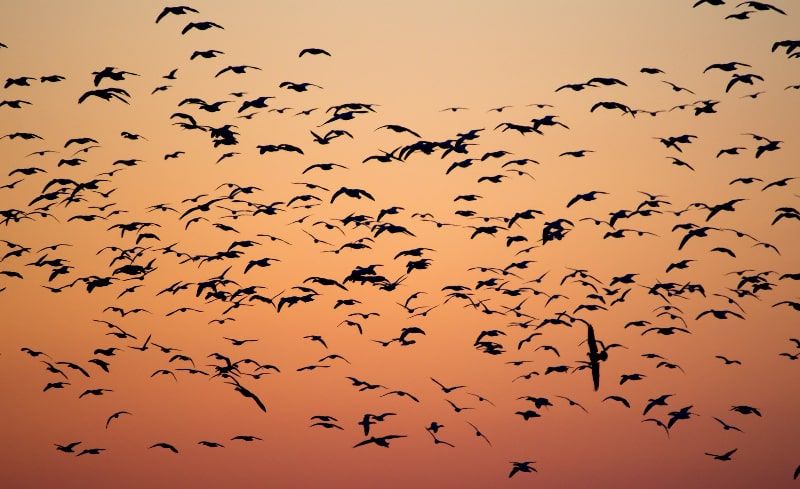Climate change and night lights alter the migration and size of birds
The rise in temperature affects their body size and their ability to stay longer in one place. Delaying their movements affects their reproduction.

Air and water pollution, climate change, as well as night lights, are some of the main problems faced by migratory birds in the world that must be combated, according to Hernán Vázquez Miranda, a researcher at UNAM's Institute of Biology (IB).
Recently, significant alterations were documented in these animals due to the increase in temperature, such as the reduction of their body size. This is important because there are different probabilities of survival depending on how big their brains are, which is why there is the challenge of preserving green spaces, which in large cities are destroyed for housing construction.
Those with larger brains are more capable, flexible, and can move to other spaces; those with smaller brains cannot. "So, if the conditions they have in the nesting site change and become hotter, they will not be able to reproduce and the dynamics change, in many occasions all the birds that came to a certain place can no longer be there and that affects, it has a cascade effect on the rest of the ecosystem, because there may be some species of birds that help control pests", says the researcher.
Adverse situations
The use of artificial light is increasing worldwide by at least two percent per year. It is an emerging problem for astronomy, human health, and wildlife conservation because it negatively impacts numerous species and ecological communities decisively alter wildlife behaviors, limits the recovery of threatened species, and interferes with the ability of migratory species to make long-distance movements that are critical to their life cycle.
It is a serious problem due to big cities, as birds need "environmental cues", one of these is the length of the photoperiod (how much light there is). Then, when the amount of illumination decreases, several hormones turn on in them and they start to move. These large constructions turn out to be like a magnet for a moth, and it is possible to see several crashing into windows.
"Here in Mexico City, we see more and more apartment buildings, and many times trees are cut down and felled displacing the species. Added to this is the contamination with products from the burning of hydrocarbons, gasoline, and petroleum derivatives that generate pollutants that affect biodiversity," he adds.
Climate change
Climate change is another adverse situation they face because many stay longer in one place. The effects of climate change have been felt due to the temperature rise.
"There are birds that stay longer in Mexico or arrive earlier, that is, there are changes in the breeding seasons... For example, there were species of warblers that in March or April were very difficult to see, and suddenly one finds them in May or June; that is, they are here when they should already be in the northern United States. So, they are delaying their migrations".
Among those documented to have changed size and nesting is the crowned warbler (Setophaga coronata), which stays longer in Mexico; as the cold in the north is increasingly fluctuating, they are slower to migrate.
This can also be seen in the migrations of hawks and vultures, which can be seen in the phenomenon known as the river of raptors, a "highway" along which birds travel from the United States to Oaxaca, Chiapas, and Veracruz, where thousands form a kind of river in the sky to move from the Gulf of Mexico to the Pacific through the Isthmus of Tehuantepec, which allows scientists to infer that they will generate modifications in the area where they live if they arrive earlier or decide to stay longer since they are not fulfilling their ecological function.
In Mexico, the National Commission for the Knowledge and Use of Biodiversity promotes citizen science projects such as A-ver-birds, through which residents of cities or towns are invited to look for them and document their presence; this data allows them to learn more about the changes they are currently undergoing in their behavior.




